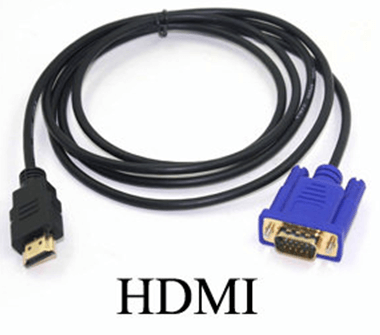HDMI Full Form | What is High Definition Multimedia Interface
What is the full form of HDMI
HDMI: High Definition Multimedia Interface
HDMI stands for High Definition Multimedia Interface. It is an all digital audio-video interface which transmits signals in uncompressed format, e.g. uncompressed video data and compressed or uncompressed digital data from a HDMI-compliant source device to a computer monitor, video projector, digital television etc. It is the digital replacement for analog video and audio standards which were widely used for many decades in the past. The production of consumer HDMI began in the late 2003. Since then, several versions of HDMI have been developed and released; all comes with cable and connector.

Types of HDMI Cable
- Standard Cable: It is also called Category 1 HDMI cable. It works at pixel speeds of 75 Mhz supporting bandwidth of around 2.23 Gbps. It is suitable for transmitting an uncompressed 1080i signal.
- High Speed Cable: It is also called Category 2 HDMI cable. It works at pixel speeds of 340 MHz supporting bandwidth of around 10.2 Gbps. It is suitable for the latest 1440p and WQXGA resolutions.
Advantages
- It carries both the video and audio signals; you don't need separate audio cables.
- It allows you establish many connections using few cables that simplify the connection process and eliminate the clutter of multiple cables.
- It allows you to turn your TV into a computer monitor as latest computers and laptops come with HDMI connection.
- It can be converted to DVI using a special adapter that offers more connection options.
- It supports various audio formats such as standard stereo, multi-channel surround sound etc.
- It has the capacity to support high definition video formats (720p, 1080i etc). It can also support enhanced definition formats such as 480p as well as standard definition formats like PAL or NTSC.